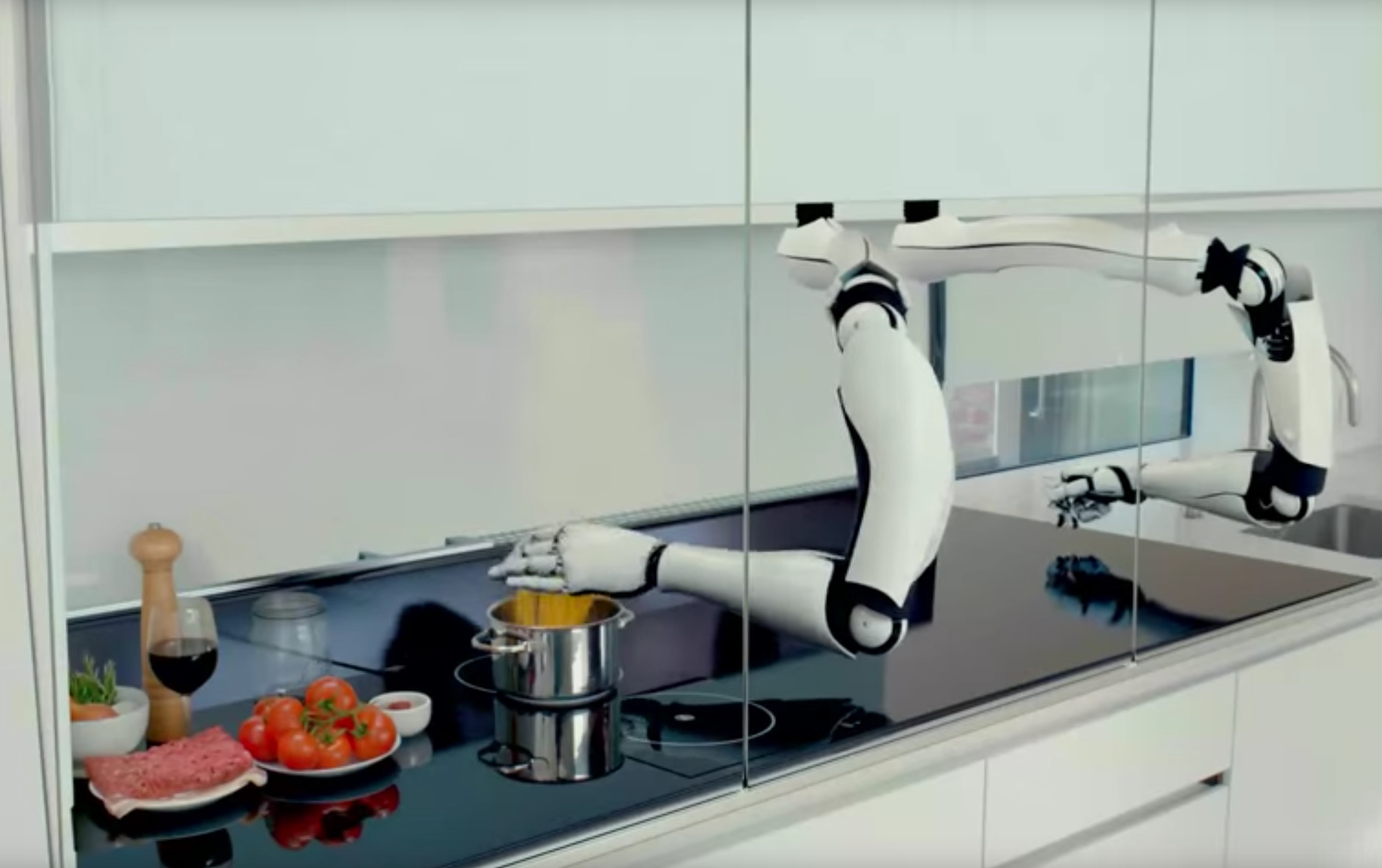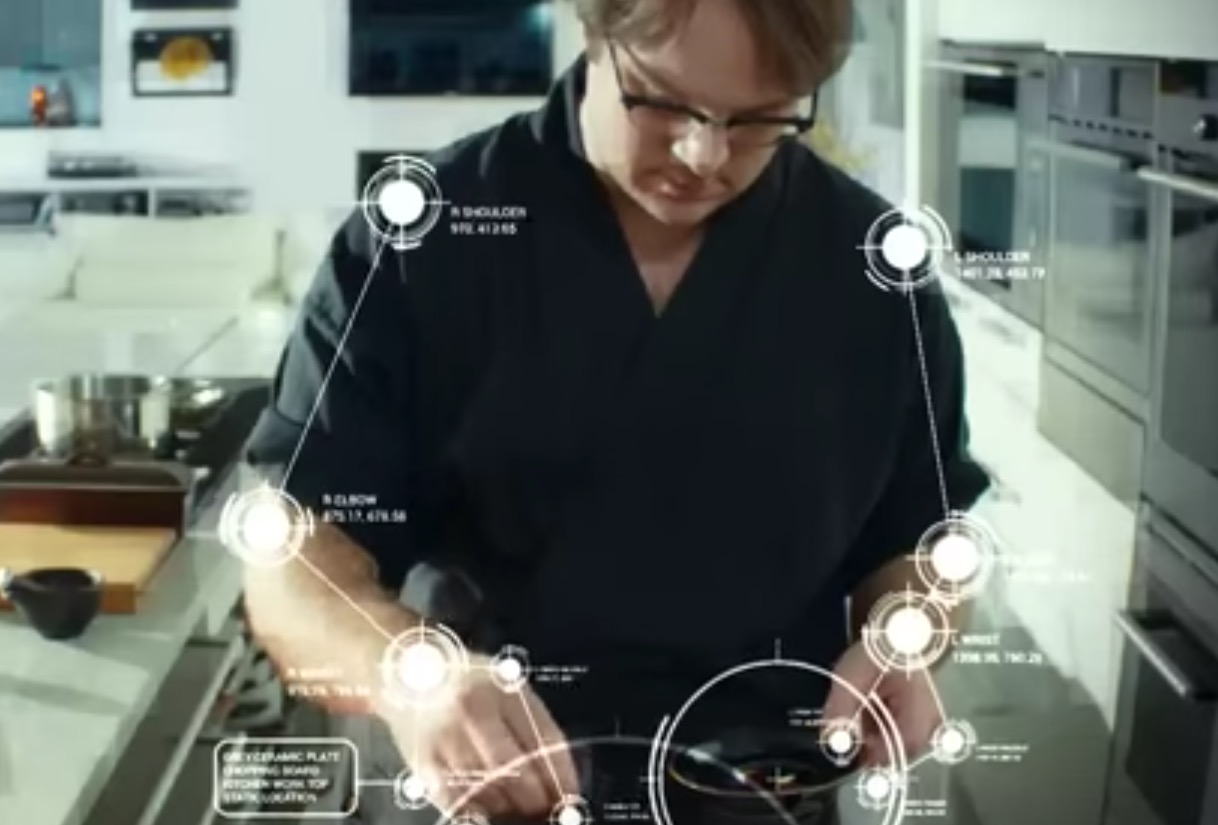
I’m watching a video of a science-fictiony kitchen robot, but wondering how this concept could apply to 3D printing.
The kitchen robot, developed by Moley Robotics, is pretty cool. It is essentially a set of robotic hands that can literally make your dinner, in exactly the same way you would: by picking up ingredients and mixing them together in the correct manner.
This video shows how the concept works:
While a labor-free dinner is certainly welcome, what I find a lot more interesting is the method of making it work. Sure, there are lots of robot arms available, but the challenge is how to program them to do the work. This could take a great deal of expertise to set up. And then do it again if you want a different kind of meal.

But that’s not how Moley Robotics does the programming. In their concept, a human simply executes the tasks and is recorded using a motion tracking system. The movements of the human are then repeated by the robot to execute the task.
That’s all very interesting to be sure, but I think this could be also used in 3D printing environments. Why? Because there is simply a great deal of manual labor associated with operating a 3D printer. Tasks typically include:
- Loading material
- Storing material in sealed containers
- Unloading material when a switch is required
- Unloading a completed 3D print
- Cleaning the print surfaces before printing
- Mounting and unmounting the print surface
- Removing support material
And there are even more opportunities when you consider the many ways a 3D print could be post-processed, including sanding, painting, dipping, assembly, gluing and anything else you could think of.
For a 3D print operation that repeatedly produces prints this concept might be a way to more easily provide automation. An operate would need only “record” the appropriate steps and the robot could take over when triggered at an appropriate moment.
Of course, some of the required movements might require a degree of precision that might not be captured with this approach. However, I suspect that by some simplification of machine design could reduce this effect, at least for some scenarios.
I have no idea if the Moley Robotic concept works, is affordable or is even real. But the concept they offer does provoke some thought.
While this might sound interesting, there is one major problem: cost. Buying a couple or three multi-axis robot arms is actually quite a pricey matter. Reliable, larger-scale strong robots can be quite costly. However, there may be a market for such a system that could be applicable for larger prototyping and manufacturing operations.
Via Moley Robotics

